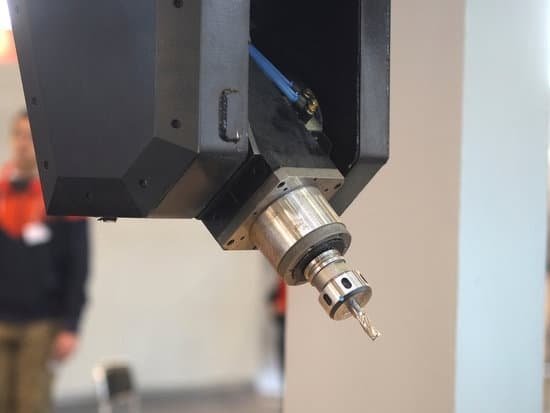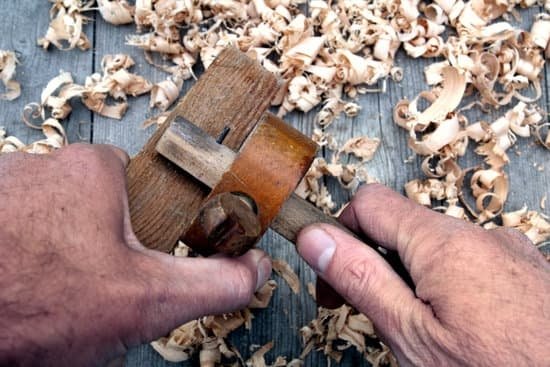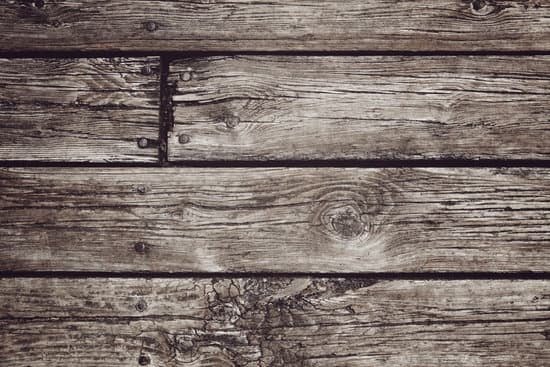Are you eager to learn how to use a woodworking plane? Whether you are a beginner in woodworking or looking to improve your skills, understanding how to use this essential tool is crucial for achieving smooth and precise results in your projects.
In this article, we will delve into the world of woodworking planes and provide you with valuable insights on its types, uses, setup, technique, common mistakes to avoid, and tips for maintaining and caring for it. By the end of this article, you will be equipped with the knowledge and confidence required to master the art of using a woodworking plane.
Woodworking planes have been used for centuries as essential tools for shaping and smoothing wood. They come in various types, each serving a specific purpose in woodworking projects. Understanding the different types of woodworking planes and their intended uses is critical for selecting the right one for your particular project. We will explore these types in detail, shedding light on their unique functions and when they are most effective.
Choosing the right woodworking plane can make all the difference in the quality of your finished work. In this article, we will guide you through the process of selecting the appropriate woodworking plane for your project based on factors such as wood type, grain direction, and desired outcome.
Additionally, we will provide insight into the anatomy of a woodworking plane so that you can understand how it works and how to properly set it up for optimal performance. With these foundational principles in mind, you will be well-prepared to embark on your journey towards mastering the use of a woodworking plane.
Types of Woodworking Planes and Their Uses
Woodworking planes come in various types, each designed for specific woodworking tasks. Understanding the different types of woodworking planes and their uses is essential for achieving accurate and smooth results in your woodworking projects.
One of the most common types of woodworking planes is the smoothing plane, which is used for creating a smooth and even surface on wood. It is typically the last plane to be used on a piece of wood before finishing, as it helps to remove any marks left by other planes and achieve a polished finish.
Next, we have the jack plane, which is a versatile tool that can be used for both roughing out stock and smoothing surfaces. It is larger than a smoothing plane, making it ideal for quickly removing material and flattening large surfaces.
Another important type of woodworking plane is the block plane, which is smaller in size and perfect for fine trimming work. It can be used for cleaning up end grain, chamfering edges, and even shaping small pieces of wood.
Overall, understanding how to use a woodworking plane involves not only mastering the proper techniques but also selecting the right type of plane for the specific task at hand.
| Type of Woodworking Plane | Primary Use |
|---|---|
| Smoothing Plane | Creating smooth and even surfaces |
| Jack Plane | Roughing out stock and smoothing surfaces |
| Block Plane | Fine trimming work such as cleaning up end grain, chamfering edges, and shaping small pieces of wood |
Choosing the Right Woodworking Plane for the Job
When it comes to woodworking, using the right tools for the job is crucial, and this includes selecting the appropriate woodworking plane. Different woodworking planes are designed for specific tasks, so it’s important to choose the right one to ensure efficiency and precision in your work.
First, consider the type of wood you’ll be working with and the specific task at hand. For example, if you’re looking to smooth large surfaces such as tabletops or doors, a jack plane would be most suitable.
On the other hand, if you need to create a flat surface on a board or clean up rough-sawn lumber, a scrub plane would be more appropriate. Understanding the different types of woodworking planes and their uses is essential in choosing the right one for your project.
Another important factor to consider when choosing a woodworking plane is the size and weight of the tool. Larger planes are better for heavy-duty tasks and can cover more surface area quickly, while smaller planes offer more precision and control for delicate work. Additionally, considering whether you need a bevel-up or bevel-down plane can also impact your decision.
Ultimately, selecting the right woodworking plane involves assessing your specific woodworking needs and understanding how each type of plane can best address those needs. By doing so, you can ensure that you have the appropriate tool for the task at hand and achieve high-quality results in your woodworking projects.
| Woodworking Plane Type | Recommended Use |
|---|---|
| Jack Plane | Smoothing large surfaces like tabletops or doors |
| Scrub Plane | Creating flat surfaces on boards or cleaning up rough-sawn lumber |
| Bench Plane | Squaring and smoothing large panels or edges |
Understanding the Anatomy of a Woodworking Plane
Woodworking planes may seem like simple tools, but understanding their anatomy is crucial to using them effectively. Whether you’re a beginner or an experienced woodworker, knowing the different parts of a woodworking plane is essential for achieving precise and smooth cuts. Here’s a breakdown of the key components:
- Blade: Also known as the iron, the blade is responsible for cutting through the wood. It can be adjusted to control the depth and angle of the cut.
- Frog: This part holds the blade in place and allows for adjustments to be made to achieve different cutting depths.
- Cap Iron: Also referred to as the chipbreaker, this component sits on top of the blade and helps control tearout by breaking up wood fibers as they’re being cut.
- Adjustment Mechanism: This can vary depending on the type of plane, but it generally allows for adjustments to be made to the blade’s position and angle.
- Tote and Knob: These are found on handheld planes and provide handles for gripping and maneuvering the tool during use.
Understanding how these parts work together is essential in mastering how to use a woodworking plane effectively.
Proper maintenance and care of your woodworking plane ensures that all its components function smoothly. Regular sharpening of the blade, lubrication of moving parts, and keeping it clean are important for prolonged usability. With this knowledge, you’ll be better equipped to select, set up, adjust, and use a woodworking plane for various woodworking projects. Remember that practice makes perfect when it comes to using this versatile tool.
Setting Up and Adjusting a Woodworking Plane
Preparing the Plane
Before using a woodworking plane, it is essential to ensure that it is set up and adjusted properly. Start by checking the blade and making sure it is sharp. A dull blade will not only produce poor results but also make your work more difficult. Once the blade is sharp, adjust it to the desired depth using the adjustment wheel or knob on the plane.
Checking the Sole
The sole of the plane should be flat and free of any nicks or bumps to ensure smooth operation. If there are imperfections, use sandpaper or a leveling tool to flatten the sole and remove any irregularities. Additionally, lubricate any moving parts such as the adjustment mechanisms to ensure they move smoothly.
Setting the Frog
The frog is an adjustable metal piece that holds the blade in place. It controls how much of the blade extends from the mouth of the plane. Adjusting the frog allows you to control how thick or thin your shavings will be. Set it at a moderate position initially and make further adjustments as needed based on the type of wood and desired outcome.
When setting up and adjusting a woodworking plane, take your time to ensure everything is properly tuned and ready for use. Proper setup and adjustments will result in cleaner cuts and smoother finishes while minimizing mistakes caused by a poorly tuned plane. With practice, you’ll become more adept at adjusting different planes for various woodworking tasks, achieving greater precision in your work.
Remember, proper setup is crucial for achieving excellent results when using a woodworking plane. Mastering this aspect of woodworking will greatly enhance your skills as a craftsman.
Proper Technique for Using a Woodworking Plane
Once you have selected the right woodworking plane for your project and set it up properly, it is important to understand the proper technique for using it. Whether you are smoothing out rough surfaces, shaping edges, or leveling wood, using a woodworking plane requires finesse and precision.
One of the basic techniques for using a woodworking plane is to position the plane’s sole flat on the workpiece, with the blade extended slightly below the sole. Apply pressure evenly on both sides of the plane as you push it forward along the grain of the wood. It is important to maintain a consistent angle and pressure to achieve an even and smooth surface.
Another key aspect of using a woodworking plane is to pay attention to grain direction. Planing against the grain can cause tear-out, so it is essential to work in the same direction as the wood fibers. This may require adjusting your body position and flipping the workpiece as needed.
Additionally, when using a woodworking plane, it is important to take light passes at first, gradually increasing the depth of cut as needed. This approach helps prevent tear-out and allows for greater control over the planing process. The goal is to achieve a smooth finish without exerting unnecessary force on the wood or causing damage.
Mastering these techniques takes practice and patience, but with time and experience, you will be able to use a woodworking plane effectively for various woodworking tasks. Remember to always prioritize safety by keeping your fingers away from the blade and wearing appropriate protective gear. With dedication and skill, you can unlock the full potential of this classic woodworking tool.
Common Mistakes to Avoid When Using a Woodworking Plane
When using a woodworking plane, it is important to be aware of common mistakes that can occur and how to avoid them. By understanding these potential pitfalls, woodworkers can ensure that they achieve the best results and maintain the longevity of their tools.
Here are some common mistakes to avoid when using a woodworking plane:
- Improper sharpening: One of the most common mistakes woodworkers make when using a plane is not properly sharpening the blade. A dull blade will not only produce poor results, but it can also be dangerous to use. It is important to regularly sharpen the blade using appropriate sharpening tools and techniques.
- Incorrect setup: Another mistake to avoid is setting up the plane incorrectly. This includes not properly adjusting the depth of cut, sole flatness, or mouth opening. Before starting any project, take the time to ensure that your plane is set up correctly for the specific task at hand.
- Inconsistent pressure: When using a woodworking plane, it is crucial to apply consistent pressure throughout each pass. Uneven pressure can lead to uneven shaving thickness and an inconsistent finish. Practice maintaining a steady and even pressure while planing to achieve the best results.
By being mindful of these common mistakes and taking proactive measures to avoid them, woodworkers can improve their skills in using a woodworking plane while also prolonging the life of their tool. Mastering proper technique and maintenance will ultimately lead to achieving high-quality results in woodworking projects.
In order for woodworkers to utilize woodworking planes effectively in their craftwork, they must understand how they operate, which one operates well with different kinds of woods or designs, how they should be appropriately set up before use so as not alter its performance or cause damages on surfaces as well as some general tips on maintaining its longevity. How-to guides are available for consulting when needed for further information about this topic.
Tips for Maintaining and Caring for Your Woodworking Plane
Maintaining and caring for your woodworking plane is essential to ensure its longevity and optimal performance. Proper maintenance can also prevent damage to the plane and make it more enjoyable to use. Here are some tips for maintaining and caring for your woodworking plane:
Cleaning and Storage
After using a woodworking plane, it is important to clean it thoroughly to remove any wood shavings, dust, or debris. Use a brush or compressed air to clean the plane body, sole, and blade. You can also use a lubricant or oil to protect the metal parts from rusting.
When not in use, store your woodworking planes in a dry and secure location. Consider using a tool chest or cabinet with proper padding to keep them safe from damage.
Sharpening the Blade
Regularly sharpening the blade of your woodworking plane is essential for achieving smooth and precise cuts. You can use a sharpening stone or honing guide to maintain the sharpness of the blade. It is recommended to hone the blade after every few uses or as needed depending on the type of wood you are working with.
Checking for Wear and Tear
Periodically inspect your woodworking plane for any signs of wear and tear. Look for loose components, cracks in the body, or any other damage that may affect its performance. If you notice any issues, address them promptly to prevent further damage.
By following these tips for maintaining and caring for your woodworking plane, you can ensure that it remains in top condition for years to come. Proper maintenance will not only prolong the life of your plane but also contribute to better woodworking results.
Mastering how to use a woodworking plane includes not only understanding how it works but also how to care for it properly. By following these tips, you can enjoy using your woodworking planes for many projects to come.
Conclusion
In conclusion, mastering the art of using a woodworking plane is essential for any woodworker looking to create smooth, precise surfaces on their projects. Understanding the different types of planes and their uses is crucial in choosing the right tool for the job. Additionally, knowing the anatomy of a woodworking plane and how to properly set it up and adjust it will ensure that it performs at its best.
Proper technique is key when using a woodworking plane, as this can make all the difference in achieving a flawless finish. Avoiding common mistakes such as planing against grain or improper sharpening techniques is also important in getting the desired results. Finally, regular maintenance and care for your woodworking plane will prolong its lifespan and keep it functioning optimally.
By following these guidelines on how to use a woodworking plane, woodworkers can confidently tackle various projects with precision and efficiency. Whether smoothing rough lumber or creating intricate joinery, having a mastery of this essential hand tool will elevate the quality of your woodworking endeavors. With practice and dedication, anyone can become adept at using a woodworking plane to achieve professional-level results in their craft.
Frequently Asked Questions
How Does a Woodworking Plane Work?
A woodworking plane works by using a sharp blade set at an angle to shave off thin layers of wood. The plane is pushed along the surface of the wood, and the blade cuts and smooths the surface.
What Planes Should a Beginner Use for Woodworking?
For beginners in woodworking, it’s recommended to start with a block plane, which is versatile and easy to handle. A smoothing plane is also useful for finishing surfaces, while a jack plane can be used for rougher work.
How Do You Set Up a Woodworking Plane?
Setting up a woodworking plane involves adjusting the blade so that it protrudes slightly from the sole of the plane. This can be done by loosening the lever cap, moving the blade to the desired position, and then tightening the lever cap again.
The depth of cut can also be adjusted using the adjustment knob or wheel on the plane. Additionally, checking and adjusting the sole of the plane to ensure it is flat and free from defects is important for proper setup.

Hi everyone! I’m a woodworker and blogger, and this is my woodworking blog. In my blog, I share tips and tricks for woodworkers of all skill levels, as well as project ideas that you can try yourself.





